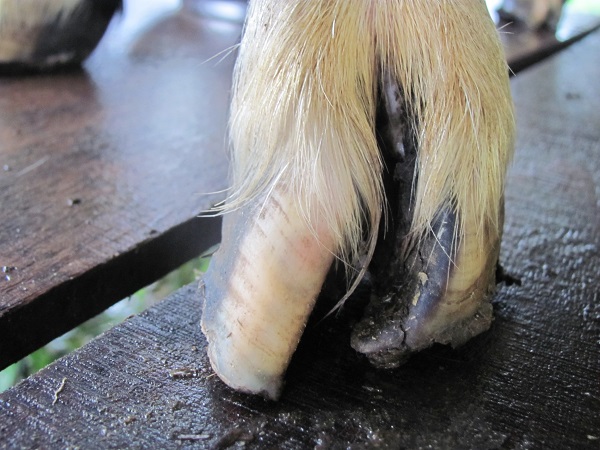

If any animal on the farm property has foot rot, the bacterium will now live in the soil. It’s important to keep shelters dry so goats do not bring disease in.
Not all limping is a foot rot symptom. Examine the hoof completely before treating. Stone bruising can cause pain and the goat will react by limiting weight on that foot.
Arthritis in older goats can lead to lameness and sore joints, and cold weather plays a part in arthritic pain. A goat may hold up a stiff leg after lying down for a long period. If you don’t see any evidence of disease or find any tender spots on the bottom of the hoof, check for other causes of lameness. It could be that your goat could use a joint lubricating supplement to combat the effects of aging.
Proper goat hoof trimming can’t eliminate the chance of your goat contracting hoof rot, but a healthy hoof is more resistant to bacteria in the environment.
Take these steps to ensure good goat hoof health:
– Trim goat hooves regularly and inspect for signs of injury or disease. Regular hoof trims reduce overgrown areas where wet mud can be trapped.
– Since the bacterium needs moist, anaerobic conditions, keeping stalls clean and dry helps keep it under control. Frequently remove any soaked bedding and muddy, manure-soiled areas.
– Quarantine any new animals joining your herd for at least 30 days, even your own goats that leave the farm for breed shows or fairs.
– Practice good biosecurity on and off your property. Have designated footwear for your goat shelter and do not wear those boots to visit other farms or goat areas.
Unfortunately, once the causes of hoof rot in goats and other ruminants enter your property, it is almost impossible to eradicate it. With good prevention tactics, hopefully, you will avoid dealing with it.
 Contact Jaguza Support
Contact Jaguza Support